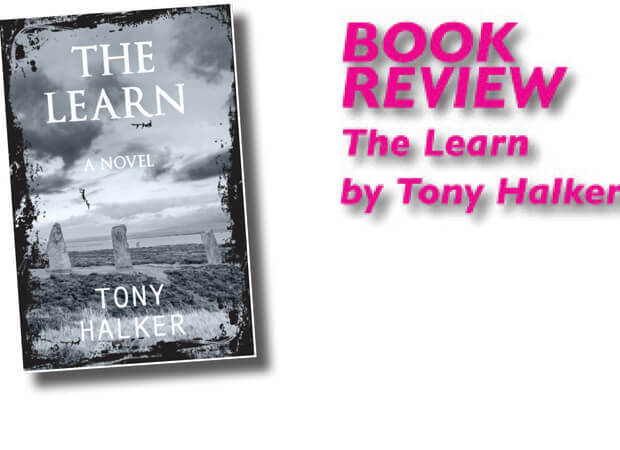The Learn

The Learn
by Tony Halker
Published by Clink Street Publishing, £8.99
Available from Amazon.
This may be one of the most ambitious and extraordinary novels you will find this year. Not many debut novelists will devise an original form of language for their story – even fewer will carry it off. Berkhamsted author Tony Halker does both.
Tony sets The Learn in Bronze Age North Wales. Language (oral, not yet written) may be assumed to have been less well developed in those distant times, more than 3,000 years ago. Tony conveys this in a distinctive and appealing style. The sentence structure and punctuation is idiosyncratic and his use of parts of speech – especially articles and participles – is unpredictable. The story is told almost entirely in the present tense and active voice. And since the Roman Conquest is in the future, Tony carefully rations himself where words of Latin origin are concerned.
As a result the text has a simple and often fluid informality. The title is a good example: strictly speaking, the Learn is a gerund; but gerunds always end ‘-ing’. Would the Celtic tribes of pre-Roman Britain have bothered with such niceties? Probably not. And if at times the language feels almost poetic it’s worth remembering that at about this time elsewhere in the civilised world, the poetry Homer held in his head was being written down for the first time.
The story follows the progress of a young scavenger, Owayne, into adulthood and specifically into the priesthood. It’s a hieratic society in which women enjoy parity with (or in some regards superiority to) men. It is dominated by druids, threatened by internal dissension and external attacks. On its margins an underclass exists, and its treatment of these beings helps to determine the moral health of the tribe.
The tale’s backdrop is an impressive recreation of Bronze Age civilisation. Its starting points are land and sea and what they might provide; superimposed on this, individuals and tribes add to and abstract from the landscape. Culture is presented as a daily essential in the matter of living, acknowledging the gods and, ultimately, preparing to die.
The religion, though largely animistic (with due respect to a dominant fertility and nature goddess), contains the seeds of a spirit of scientific enquiry. One of the sources of dissent is the invention of the wheel, the merits of which are discussed in relation to the comfort of the wood spirits involved. Part of Owayne’s instruction is in the making of charcoal, and he will move on to metal-work. Tony’s presentation of technology in the context of animism is one of the recurrent charms of the book.
There are also moments of high drama: a friend saved from drowning, an insurgency defeated; and of tenderness. Throughout, the language takes you back to a time when human potential lay largely unexplored. It’s a fascinating novel written in a unique style. DG
